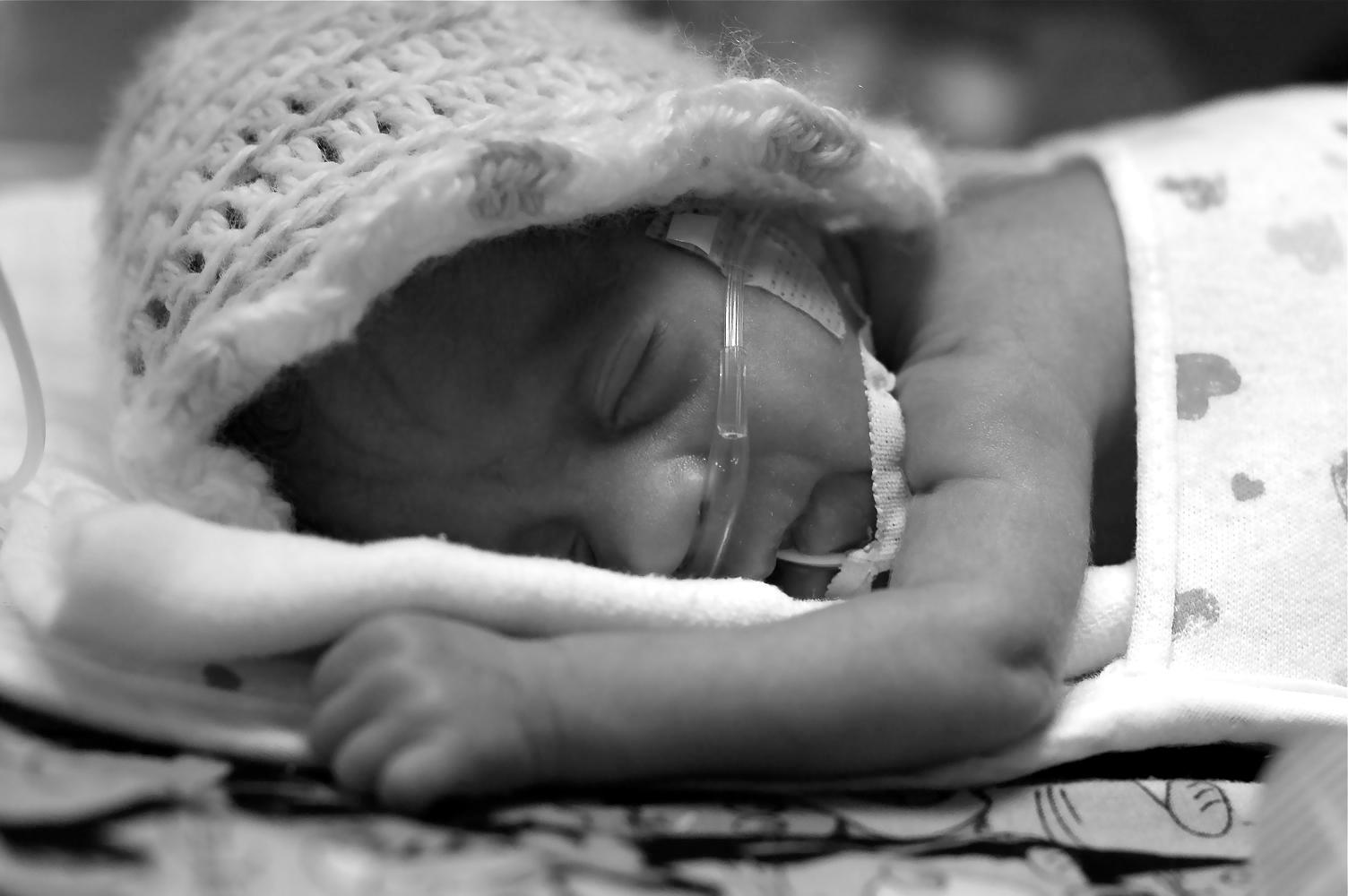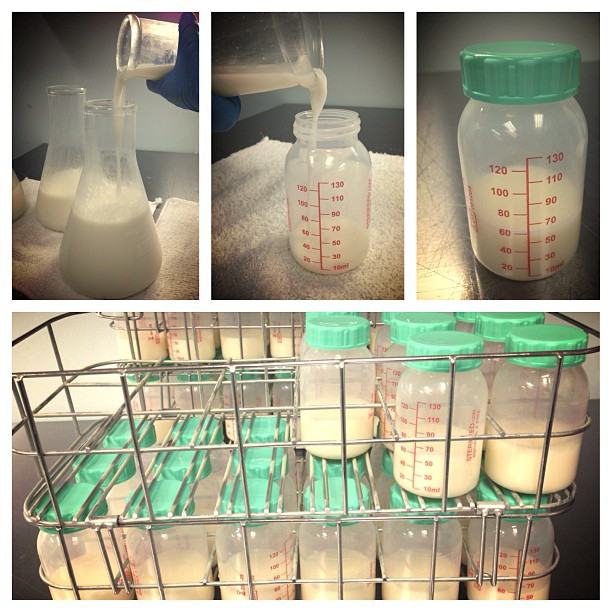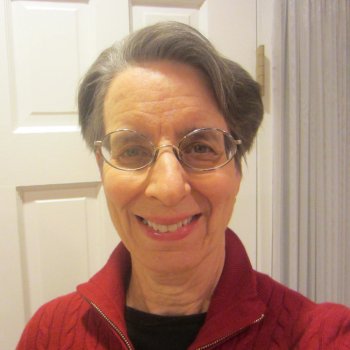Getting Human Milk to Human Babies: The Role that HMBANA Milk Banks Play
One of the wonderful things about the internet is having access to so much information. Need a recipe, driving instructions, or a referral for an electrician? It’s a click or two away. The downside is that information isn’t always complete or accurate, and misinformation can spread. The amount of media attention on the sharing of human milk has exploded in recent years leading to a certain amount of confusion. We caught up with Frances Jones, Executive Director of BC Women’s Mothers’ Milk Bank in Vancouver, Canada and president-elect of the Human Milk Banking Association of North America (HMBANA) and have developed this “Milk Banking 101” blog in order to clear up some confusion about non-profit milk banks and open a conversation within the IBCLC community so that IBCLCs are positioned to support the choice that best meets the needs of breastfeeding families and their babies. We hope you’ll join in this conversation!
By Frances Jones RN, MSN, IBCLC

Background on Milk Banking
The first milk banks came into existence in the early 20th century as food technology evolved allowing for successful storage of human milk. Even in those early banks, donors and their milk were carefully screened. Fast forward to the 80’s and a post-AIDS era of caution. Those of us who believe in the power of human milk formed the Human Milk Banking Association of North America (HMBANA) to ensure safe standards for all donor milk banks in North America. The HMBANA guidelines, developed with the assistance of the Food and Drug Administration (FDA), the Center for Disease Control (CDC) and the American Academy of Pediatrics (AAP), have been used globally in the development of nearly all milk banking standards and are reviewed annually to ensure safety.
Milk that is subject to storage and transportation is not the same product as milk that is consumed straight from a mother’s breast (which is why Louis Pasteur is considered a founder of disease-prevention-science for figuring out how to reduce the pathogens in milk and wine through a technique that still carries his name today). HMBANA’s safety steps include screening donors through interviews and blood tests (for HIV, HTLV, syphilis, hepatitis B and C), pasteurizing the milk, testing for pathogen growth, tracking milk and implementing mock recalls. Milk banks put huge effort into ensuring donor human milk is safe for the most vulnerable of infants.

What is the Difference Between “Milk Banking” and “Milk Sharing”?
Milk banking involves donating human milk to an intermediary (similar to a blood bank) who ensures the safety of the product and distributes it to those in greatest need. Milk sharing involves sharing human milk with sisters, neighbors, and friends, and is a practice that has been going on for centuries as mothers have helped each other. Today, the Internet has changed the way we communicate, enabling a rise in milk sharing outside of our closest circles. This capacity for expanded milk sharing may increase the risk associated with the transmission of disease and contaminants (e.g. drugs and alcohol). Several health authorities including the FDA, AAP, Health Canada as well as the French government have expressed concern over Internet milk sharing.
When supply is scarce, as it has been in recent years with a growing demand for donor milk, HMBANA banks are limited to serving the most vulnerable and critical babies in our communities. In 2010, the CDC reported over 325,000 low-birth weight (LBW) births in the United States, of which over 55,000 were very low birth weight (VLBW) babies, weighing less than 1.5kg. In 2011, HMBANA banks collected a little over 2 million ounces of donor milk, which averages only 7 ounces per LBW/VLBW baby. We simply need more milk to be able to meet the needs of these vulnerable infants. We recognize that many non-NICU infants (and even some adults!) would benefit from donor milk and that the cost of pasteurized donor milk in North America is a barrier to access for some (which is one of the factors contributing to the rise in milk sharing). This is why HMBANA supports many families through charity care and our leaders are working behind the scenes to try to shape laws so donor milk is covered by more insurance companies. In Brazil, where the milk banks are part of the government health services (in contrast to the practices in North America), pasteurized donor milk is dispensed via prescription at no charge to the recipient. Access to human milk is an important public health initiative and future policies and programs should reflect this. In the meantime, the more milk that HMBANA banks collect, the more families can be served.
What is the Difference Between Non-Profit Milk Banks and For-Profit Pharmaceutical Companies?
HMBANA defines a milk bank as ”a service established for the purpose of recruiting and collecting milk from donors, and processing, screening, storing, and distributing donated milk to meet the specific needs of individuals for whom human milk is prescribed by health care providers who are licensed to prescribe.” There are also “milk depots” which are locations that collect and store milk and then transport it to a “milk bank” for processing and distribution. These terms are used loosely and some sites that are actually depots label themselves as milk banks.
Increasingly, our non-profit milk banks have faced competition for donors from for-profit pharmaceutical companies that solicit donor milk and turn it into high-end products. HMBANA milk banks are non-profit and keep processing costs associated with safety protocols as low as possible. For-profit companies sell their products at a profit while relying on donor mothers to provide the raw human milk for processing. HMBANA banks count on additional funds through grants and in-kind donation to continue operating. Private companies must achieve profit from their products to satisfy investors. Many IBCLCs and others who support breastfeeding mothers are confused because some of the for-profit collection sites have names that seem to indicate that they are association with non-profit banks (e.g. Milk for Wishes Milk Bank, Helping Hands Milk Bank). Ambiguity can sometimes mislead and confuse donors. Every donor should understand who is receiving their milk and what will be done with it (read this great blog post by a mom who felt misled regarding the generous donation of her milk).

Frances Jones is the Coordinator of the Lactation Services and Milk Bank at British Columbia Women’s Hospital in Vancouver, British Columbia, Canada. Frances has worked with breastfeeding families for over thirty years and has been running the milk bank since 2000. She is the author of the HMBANA’s Best Practice for Expressing Storing and Handling Human Milk in Hospitals Homes and Child Care Settings and has spoken at many conferences on breastfeeding and milk banking topics. Most importantly, she is the mother of five sons and grandmother of one granddaughter – all breastfed.
In our next blog we’ll tackle some misunderstandings about milk-banking. If you have questions you’d like answered, please leave a comment and we’ll do our best to find answers. We’d love to hear about the resources you feel would help you to provide mothers with good information regarding their options when they have extra milk or are seeking milk for their infants. We look forward to continuing this conversation.
* A special THANK YOU to Indiana Mothers’ Milk Bank for permission to use their photos. For more of their photos, check out their Instagram profile.
Read the original of this article on http://lactationmatters.org/2013/03/26/getting-human-milk-to-human-babi…

